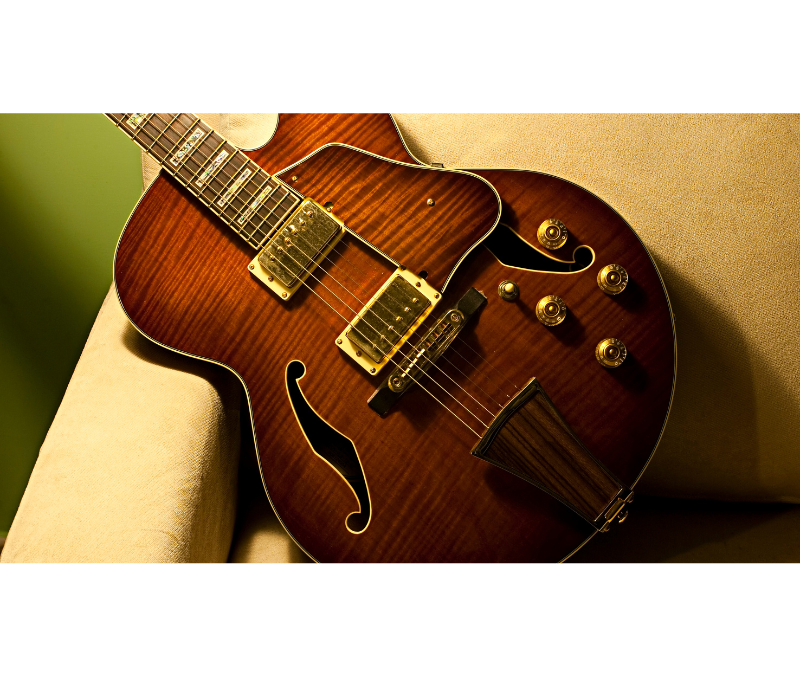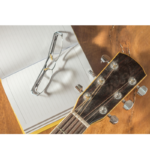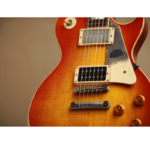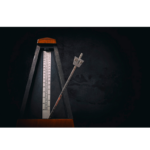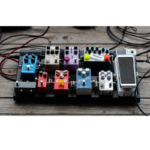If you’ve ever listened to iconic blues players like B.B. King or Stevie Ray Vaughan and wondered how they achieved such soulful, expressive tones, you’re not alone. Blues guitar tone is all about emotion, and much of it comes down to how you shape your sound with the right combination of pedals, guitars, and amps. In this blog post, I’ll break down how to craft your own blues sound using essential blues guitar pedals and share creative ways to enhance your tone.
The Foundation of Blues Guitar Pedals: Overdrive
The overdrive pedal is the heart of most blues rigs. It provides that warm, gritty breakup you often hear in blues solos. When set up correctly, it pushes your amp just enough to create the sweet spot between clean and distorted, known as “crunch.”
Key Overdrive Pedals for Blues:
- Ibanez Tube Screamer: This legendary pedal is famous for its smooth, creamy overdrive. The Tube Screamer is perfect for mid-boosted solos that cut through the mix without overpowering the natural tone of your guitar. This is the go-to pedal for artists like Stevie Ray Vaughan.
- Boss BD-2 Blues Driver: Known for its dynamic response, the BD-2 delivers a wide range of tones, from subtle breakup to full-on crunchy overdrive. It’s incredibly versatile, whether you’re playing soft rhythms or digging into powerful lead lines.
How to Use It: Dial in a medium amount of gain and let your playing dynamics dictate how much overdrive you get. The harder you pick, the grittier the tone becomes.

Download the ebook “SoloCraft”!
SoloCraft is the ultimate guide to mastering guitar soloing, designed for players of all levels. Packed with step-by-step lessons, pro-level techniques, and real-world examples, SoloCraft teaches you how to navigate the fretboard, craft expressive solos, and unlock your full potential as a lead guitarist. Whether you’re improvising, building speed, or adding emotion to your playing, SoloCraft gives you the tools to solo like a pro.
Download Now
Adding Depth with Reverb and Delay
While overdrive gives your tone edge, reverb and delay add space and depth, allowing each note to resonate. Many classic blues tones benefit from a touch of reverb, mimicking the natural reflections you’d hear in a large room or hall.
Key Reverb Pedals:
- Electro-Harmonix Holy Grail Reverb: This pedal offers multiple reverb settings, including a spring reverb that replicates vintage tube amps’ “boingy” sound, perfect for blues ballads or slow shuffles.
Key Delay Pedals:
- TC Electronic Flashback Delay: Offering both analog-style delays and digital precision, this pedal adds a shadow to your lead lines, creating an echo that complements your phrasing.
How to Use It: For blues, less is more when it comes to reverb and delay. Set your reverb to a light spring setting and delay with a short feedback for subtle, tasteful echoes that enhance your playing without overwhelming the natural tone.
Boosting Solos with a Clean Boost
A clean boost pedal is another essential tool in a blues guitarist’s arsenal. It allows you to increase your volume for solos without altering your tone. This is particularly useful for cutting through a live mix during a gig.
Key Boost Pedals:
- Walrus Audio Emissary Parallel Boost: Known for its transparent sound, this pedal can be used to push your amp into a more saturated tone or simply boost your signal for lead sections.
How to Use It: Engage the clean boost when switching from rhythm to lead to get an instant volume jump without adding extra distortion. This ensures your solos stand out without getting too muddy.
Experimenting with Fuzz for Gritty Blues Guitar Pedals Tone
While overdrive gives you smooth and dynamic tone, adding a fuzz pedal to your rig can provide an aggressive, raw sound that works well for certain blues subgenres, like Chicago blues.
Key Fuzz Pedal:
- Electro-Harmonix Big Muff Pi: This classic fuzz pedal adds a thick, saturated sound to your playing. It’s perfect for creating long, sustained notes with heavy fuzz, as heard in the solos of players like Jimi Hendrix.
How to Use It: Fuzz works best in small doses for blues. Try engaging your fuzz pedal on the choruses or during climactic moments of a solo. Just be careful with the settings—too much fuzz can overpower the subtle dynamics that blues is known for.
Crafting Your Blues Tone with These Blues Guitar Pedals
When crafting a great blues tone, the order of your pedals matters. Typically, you’ll want to arrange them like this:
- Tuner: Always place the tuner first for accurate signal reading.
- Overdrive/Fuzz: These go early in the chain to shape the core of your tone.
- Boost: Follow up with a boost to drive your solos without muddying your sound.
- Reverb/Delay: Reverb and delay should be placed at the end to create space around your sound.
Here’s a simple blues rig example:
- Guitar: Fender Stratocaster (single-coil pickups) for bright, punchy blues tones.
- Amp: Fender Blues Junior for that sweet tube-driven sound with a slight breakup.
- Pedals: Ibanez Tube Screamer, Walrus Audio Emissary Boost, and TC Electronic Flashback Delay.
Join the Conversation: Guitar Freaks Hangout
Want to dive deeper into crafting your own blues tone with blues guitar pedals? Join the Guitar Freaks Hangout on Discord! It’s a community of guitar enthusiasts where we share gear tips, practice routines, and exclusive lessons. Whether you’re new to pedals or an experienced player, you’ll find valuable insights to take your tone to the next level.
Let’s continue exploring blues guitar together—one pedal at a time!

Download the ebook “SoloCraft”!
SoloCraft is the ultimate guide to mastering guitar soloing, designed for players of all levels. Packed with step-by-step lessons, pro-level techniques, and real-world examples, SoloCraft teaches you how to navigate the fretboard, craft expressive solos, and unlock your full potential as a lead guitarist. Whether you’re improvising, building speed, or adding emotion to your playing, SoloCraft gives you the tools to solo like a pro.
Download Now

